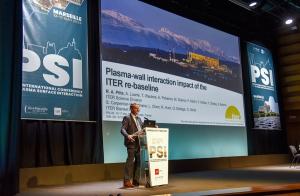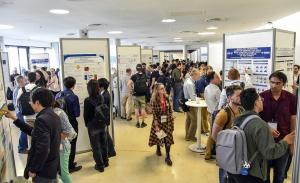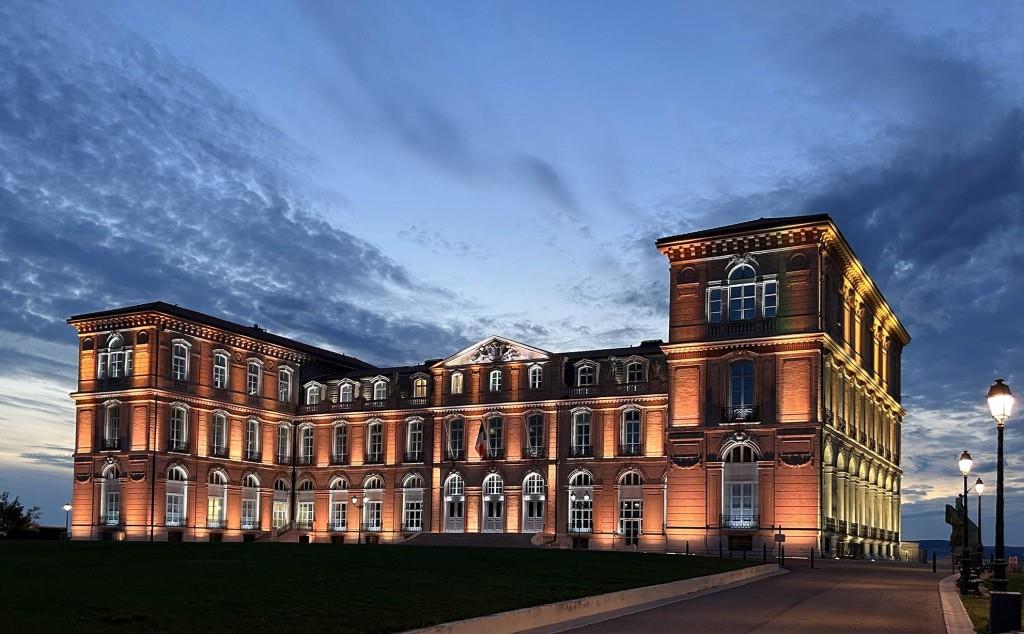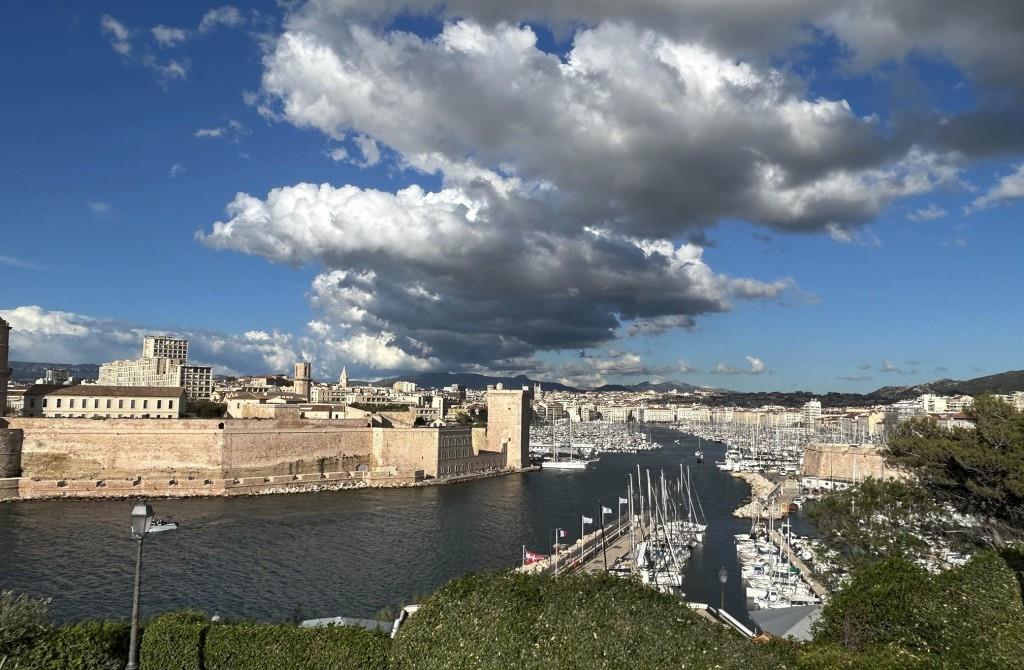Marseille palace hosts preeminent conference
Fifty years after the first International Conference on Plasma-Surface Interactions in Magnetic Confinement Devices in 1974, the 26th edition of this much-lauded conference series took place just a short drive from ITER.
A major component of the proposed new ITER baseline is the switch from beryllium to tungsten material for the blanket first wall armour. This modification has important benefits and potential drawbacks for ITER operation. It eliminates the expected high plasma-induced erosion of beryllium (thus extending armour lifetime in some areas of the main wall) and the associated in-vessel tritium retention due to co-deposition with eroded material. It dispenses with the need for complex assembly and disassembly of components arising from the toxicity of beryllium. And it replaces a metal with relatively low melting point by one with the highest melting point in the periodic table, increasing operational margins before surface damage due to intense plasma transient impact occurs. On the downside, even though erosion rates due to plasma impact on tungsten are far lower than for beryllium, ITER burning plasmas are orders of magnitude less tolerant to any tungsten impurities which do make their way into the hot core. Plasma start-up on tungsten surfaces can also be an issue, requiring that an additional tool (boronization) be put in place to condition the plasma-facing surfaces. Plasma boundary physics, plasma material interactions and wall conditioning are thus all key aspects of ITER re-baselining.
How fitting then that the 26th edition of the biennial International Conference on Plasma-Surface Interactions in Magnetic Confinement Devices (PSI-26) should be hosted this year in Marseille, a mere 75 km from ITER Organization headquarters. What's more, the conference was held in exactly the same week in which the ITER Council Science and Technology Advisory Committee convened for its 30th meeting to examine progress in the articulation of the Updated Baseline since the first presentations made at STAC-29 in September 2022.
The PSI Conference, first held in 1974 at the Argonne National Laboratory in the United States, began as a relatively small gathering of mostly plasma-material interaction specialists. It expanded rapidly through the 1980s to encompass a much larger scope, enabling dialogue between plasma physicists and surface scientists. It has convened throughout the transformation from research on small scale magnetic confinement devices (ironically often using metallic plasma-facing components) through the "carbon era" of much larger experiments with graphite armour including the first deployments of deuterium-tritium fuel in the JET and TFTR tokamaks in the 1990s. Today, it is the preeminent plasma-surface interaction conference in the fusion calendar.
Last held in France in 1996, the conference returned from 12 to 17 May to the country hosting ITER for its 26th edition. PSI-26 was organized by the French Alternative Energies and Atomic Energy Commission (CEA) in collaboration with Aix-Marseille University, and superbly managed by Yannick Marandet, Director of the University's Institute for Fusion Sciences and Instrumentation in Nuclear Environments (ISFIN), and his excellent team of local organizers led by Marc Missirlian.
In common with the majority of international gatherings, the Covid-19 pandemic forced the 2020 and 2022 PSI conferences onto a virtual platform, with the last in-person event held at the Princeton Plasma Physics Laboratory in June 2018. It was thus especially rewarding to be able to celebrate the 50th anniversary of this conference series face-to-face once again. It took place at the magnificent Palais du Pharo, whose construction on the Pharo promontory began in 1858 at the request of Louis-Napoleon Bonaparte and was intended as an imperial residence for Empress Eugénie, though the latter never actually lived there and gifted the palace to the city of Marseille in 1884. During coffee and lunch breaks throughout the conference, participants enjoyed splendid views over the Vieux Port of Marseille from the palace terraces outside the main amphitheatre. Just the week before, the famous French three-masted, steel-hull barque "Le Belem" had passed right beneath the Pharo, after a 12-day voyage from Athens carrying the Olympic Flame to French soil.
In his remarks as one of the speakers in the conference opening session, ITER Organization Director-General Pietro Barabaschi emphasized the importance of the material and plasma-material interaction both for ITER and for the development of future fusion reactors, no matter what technique is deployed to achieve the fusion reactions. This was followed by an introductory presentation delivered by the author (a regular PSI Conference participant since a first appearance as a graduate student at the 1988 edition (PSI-8) held in Juelich, Germany) describing the key plasma-wall interaction challenges faced by the ITER re-baseline. Then it was straight into a busy week of presentations and poster sessions for the 438 attendees from 25 countries. As usual, all benefitted from what is a rare tradition observed by the PSI conference series of avoiding parallel sessions so that anyone who wishes can listen to all oral presentations and attend all the poster sessions. This is especially important in an area of fusion research in which the often disparate disciplines of plasma physics and material science must meet. Several papers, many linked directly to the ITER re-baseline, were presented by members of the ITER Science Division.
Given the long timescales for fusion research and the increasing demand for highly qualified fusion scientists that the field must satisfy in coming years, it was particularly gratifying to witness the high proportion of young participants at the meeting, with graduate students making up 26% of the delegates. Gender diversity also featured strongly: 20% of conference participants were women and Women in Fusion organized a well-attended networking luncheon. A special session also celebrated 50 years of PSI conferences, with several previous conference hosts remembering the history and development of the plasma-surface interaction field in a series of dedicated presentations.
Rendez-vous then in May 2026 in the eastern Bavarian city of Regensburg for the next installment of this venerable and much-loved conference series.








